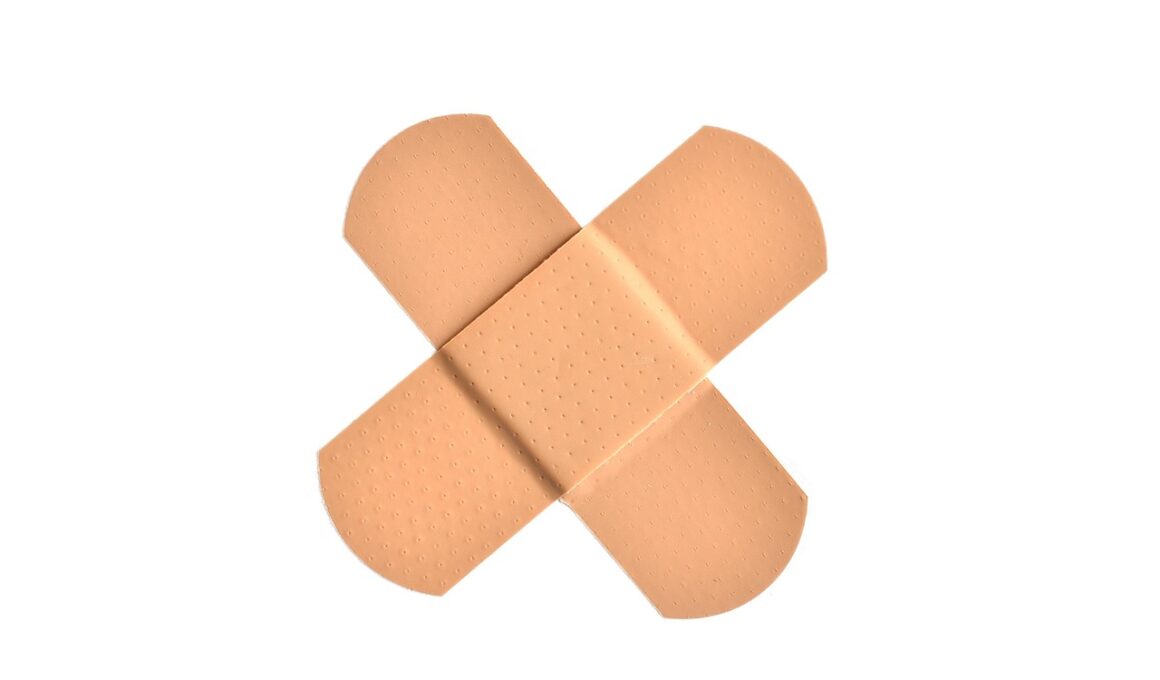The Science Behind Compression and Tissue Healing
Compression therapy plays a significant role in injury management and recovery. Understanding the science behind compression can help optimize healing. Compression works by applying consistent pressure to the injured area, which can reduce swelling and enhance circulation. This mechanism can be particularly beneficial after acute injuries, such as sprains or strains. By limiting the swelling, compression helps to minimize pain and promotes faster recovery. Additionally, it can prevent the formation of hematomas, which are localized collections of blood outside of blood vessels. Furthermore, it assists in maintaining muscle temperature, allowing for better muscle performance during rehabilitation exercises. Athletes often use compression garments to enhance their performance and decrease the risk of injury. However, the exact pressure levels required for maximum effectiveness can vary depending on the type of injury, making it essential to tailor the compression to individual needs. Overall, the appropriate application of compression therapy serves as a vital tool in enhancing recovery and preventing serious complications.
When selecting a compression method, various options are available depending on the type of injury. Compression bandages, sleeves, and garments designed for specific body parts can be chosen. These options provide targeted pressure to immobilize and stabilize the area. Medical-grade compression wraps can also provide varying levels of pressure, which can be adjusted according to specific needs. The benefits of using compression are numerous; it helps in aiding lymphatic drainage, leading to reduced edema. Furthermore, compression can enhance proprioception, which refers to the body’s ability to sense its position and movement in space. This improved awareness can support coordination and balance during recovery. Active individuals, including athletes, can significantly benefit from compression due to its ability to reduce muscle soreness post-exercise. Scientific studies indicate that by minimizing recovery time, athletes can maintain their training schedules more effectively. Ultimately, exploring various compression options and understanding their benefits can empower individuals to make informed decisions for their recovery processes. Compression therapy remains a cornerstone in injury management for individuals from all walks of life.
Mechanism of Action
To fully grasp the benefits of compression, one must understand how it functions at the physiological level. The application of pressure through compression garments or bandages enhances blood circulation and decreases venous pressure. This results in improved oxygen delivery to tissues, which is crucial for energy production during the healing process. Adequate oxygen levels are essential for cellular repair and regeneration post-injury. Additionally, enhanced circulation helps to facilitate the removal of metabolic waste products that accumulate in the injured area, often contributing to pain and inflammation. Compression may also stimulate mechanoreceptors in the skin and underlying tissues, which can lead to pain reduction by altering the perception of discomfort. The effects of compression on lymphatic flow cannot be understated, as it helps to push excess lymph fluid away from the injured site, significantly aiding in the reduction of swelling. A balanced approach using compression can lead to quicker return to normal function and activity, helping individuals feel better sooner. Understanding these mechanisms allows clinicians to better apply compression for individual cases.
Another pivotal aspect of compression relates to its psychological benefits. Dealing with an injury can be mentally taxing; therefore, having the support of compression gear can enhance the athlete’s confidence and mental state during recovery. Feeling secure and supported can translate into a more positive outlook, allowing for greater engagement in the rehabilitation process. This ties into the concepts of kinesthetic awareness and how the tactile sensations associated with compression can provide reassurance. Enhanced proprioception can also lead to better positioning during rehabilitation exercises, reducing the likelihood of re-injury. Compression can bridge the gap between discouragement caused by injury and the motivation needed for recovery. It also encourages individuals to adhere to prescribed rehabilitation protocols by tailoring the support they need for unique activities. Incorporating psychological factors into healing can significantly impact outcomes, thus demonstrating the holistic approach needed in injury management. By fostering a positive recovery experience through appropriate use of compression, the overall efficacy in healing can be markedly improved across diverse population groups.
Guidelines for Effective Use
To harness the advantages of compression effectively, individuals should adhere to several guidelines. First, it is crucial to choose the right level of compression based on the injury type. Medical consultation can help interpreters discern the appropriate pressure gradient for specific conditions. Overly tight compression could lead to circulatory issues, while insufficient pressure might not offer the desired benefits. Secondly, individuals should wear compression gear for the advised duration, which may vary from injured athletes to post-operative patients. Following recommended timeframes not only boosts recovery but also reduces the risk of long-term complications. Furthermore, hydration plays a critical role when using compression, as maintaining optimal fluid intake aids circulatory functions. Tanam regular breaks from compression use to allow for normal tissue oxygenation and regeneration as well. The material used in compression garments should also be carefully considered, as breathable, moisture-wicking fabrics can enhance comfort and efficacy. Ultimately, an informed, cautious application of compression strategies can maximize healing potential, paving the way for return to optimal functionality.
Emerging studies on compression therapy continue to reshape our understanding of its role in injury management. Research has begun to delve deep into the specific protocols that yield the best outcomes for various injuries. Evidence suggests that the timing of applying compression is just as significant as the duration and type. Utilizing compression immediately after an injury occurs can result in substantial advantages in managing inflammation. Studies also explore different methods, such as intermittent compression versus continuous compression, revealing varied effects on healing rates. Similarly, researchers are evaluating the potential benefits of localized versus generalized compression. Such findings may guide clinicians in creating tailored treatment plans that address the individual needs of patients. Advances in technology are also leading to the development of smart compression devices, which can deliver real-time data on pressure levels and tissue response. This emerging field is likely to change the landscape of compression utilization significantly, setting higher standards for efficacy. Consequently, continued research will be paramount in defining future protocols, ensuring that patients receive the optimal therapeutic intervention for their recovery journey.
Conclusion and Future Implications
In conclusion, understanding the science behind compression is essential for leveraging its maximum potential in injury recovery. Compression serves as a multifaceted tool, addressing both physiological and psychological aspects of healing. As a proven method for minimizing swelling and enhancing circulation, it acts as a vital player in rehabilitation strategies. With evidence-based guidelines, individuals can harness its advantages while avoiding potential pitfalls associated with improper use. Future research directions hold promise in tailoring compression modalities for specific demographics and injuries, leading to better outcomes. As technology evolves, dynamic compression systems may further enhance treatment paradigms, integrating real-time monitoring and feedback mechanisms. Empowering patients with knowledge about their recovery options fosters engagement in their rehabilitation journey, thereby promoting overall self-efficacy. Compression therapy is not merely a physical application but also embeds a psychological layer that can significantly influence recovery perspectives. Given the vast potential of this therapy, continued education and exploration in the field of compression should remain on the forefront of best practices. Ultimately, the convergence of research, technology, and understanding will elevate inclusion of compression into standard treatment protocols in injury management.
As we transition towards the future of injury prevention and recovery, collaboration within healthcare settings will play a crucial role in maximizing the effectiveness of compression therapy. Multi-disciplinary teams composed of healthcare professionals, including physiotherapists, sports medicine specialists, and researchers, can contribute to developing best practices. By sharing findings and experiences, these teams can cultivate an environment where knowledge is exchanged, leading to a standardized approach to the application of compression in injury management. Educational initiatives targeted towards athletes and patients can also enhance awareness regarding injury management tactics that incorporate compression. With every advancement made in research, there’s an opportunity to implement those findings into both clinical and athletic environments. This involves the adaptation of training programs to include compression therapy as a fundamental element of injury prevention. The goal is to not only reduce the incidence of injuries but to also promote a quicker recovery. In addition, educating athletes about the effects of compression can empower them to take control of their recovery paths. Ultimately, the continuous refinement of compression practices will be pivotal to protecting athletes’ health and enhancing their performance.


